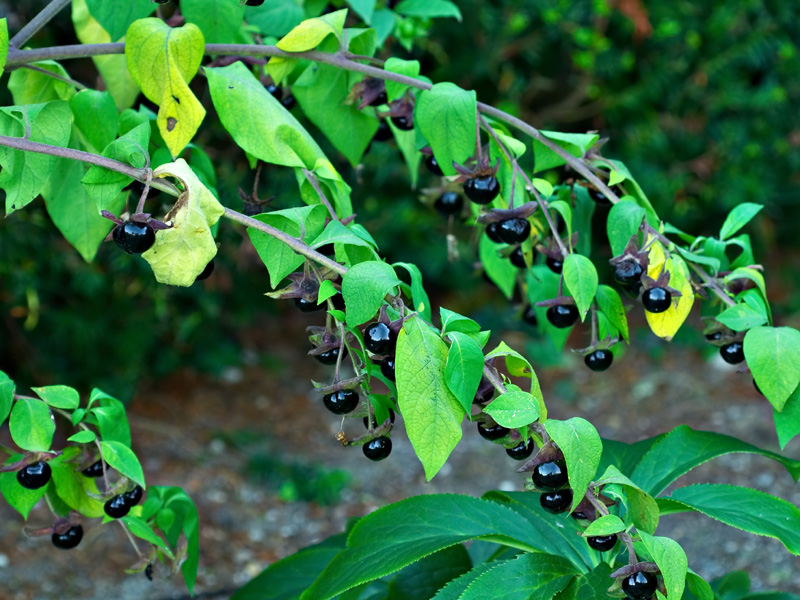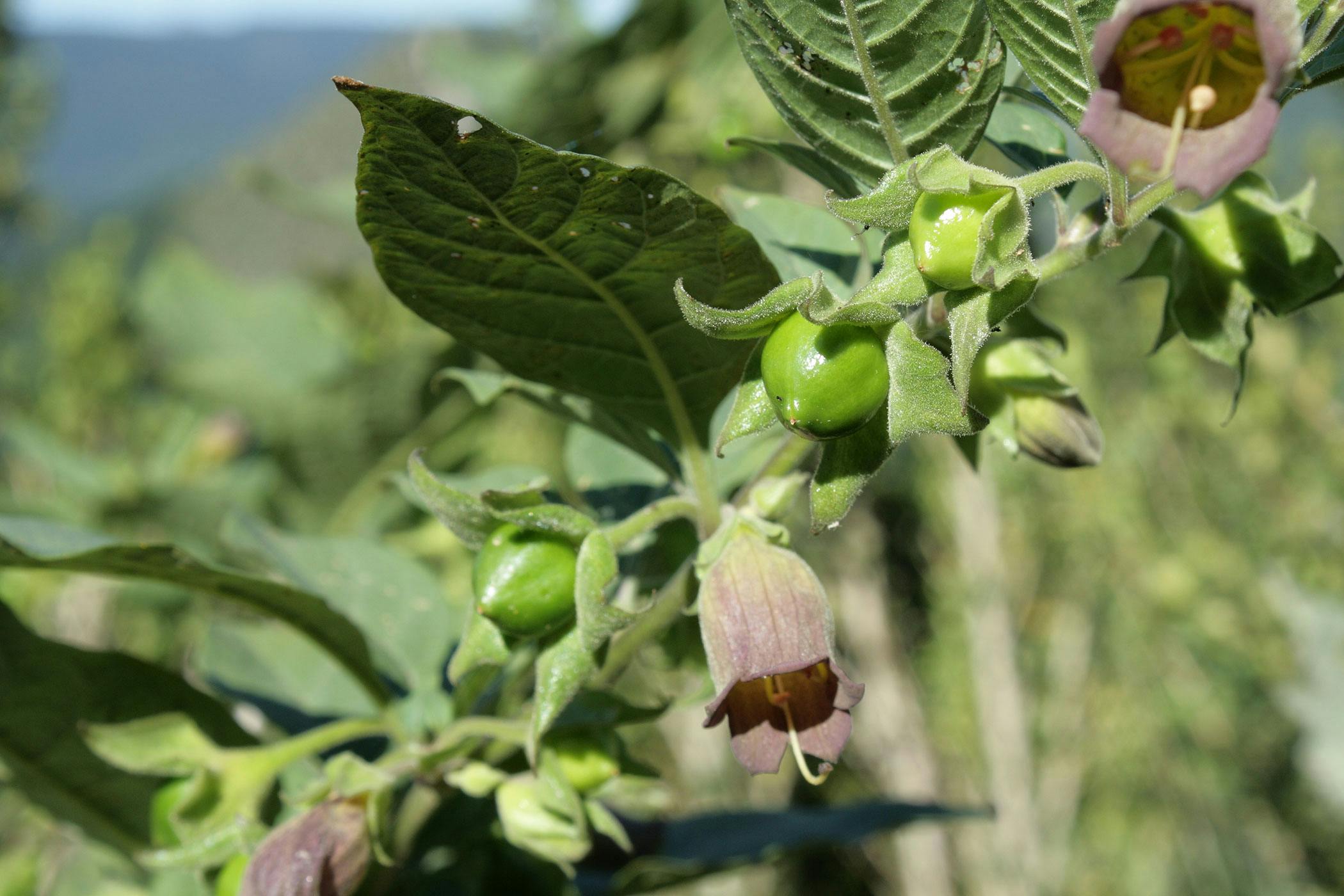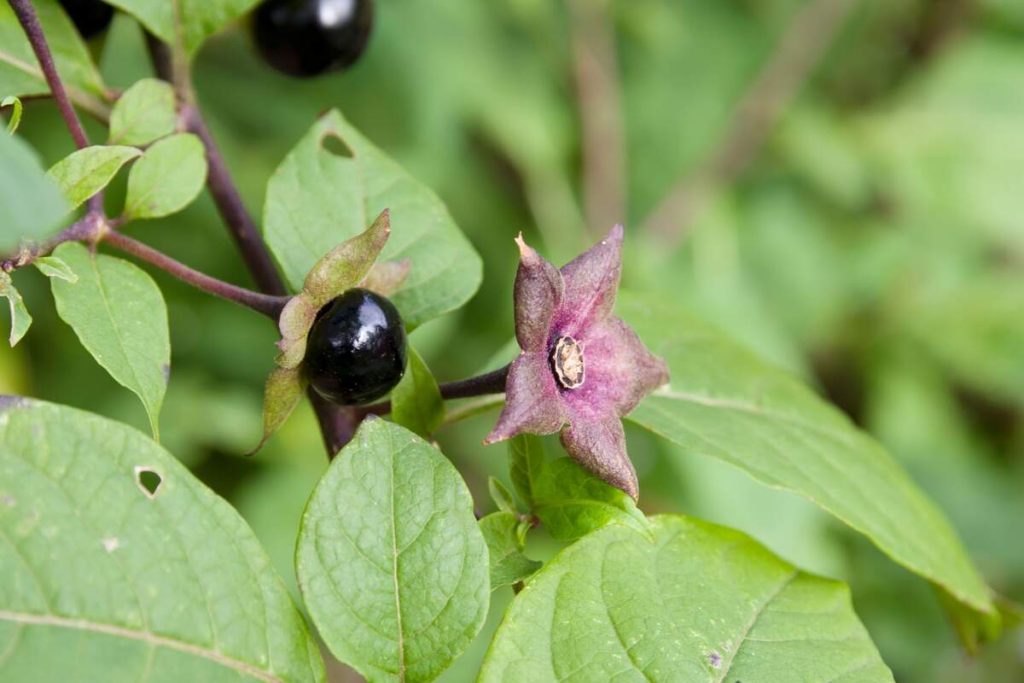Belladonna, also known as deadly nightshade, is a plant that has fascinated and terrified people for centuries. With its striking purple flowers and glossy black berries, it may seem beautiful, but this plant is one of the most toxic in the world. From ancient folklore to modern medicine, Belladonna holds a unique place in history and science. In this article, we explore what Belladonna is, its historical significance, its uses, and the dangers it poses.
Understanding Belladonna: Origins and Characteristics
Belladonna, scientifically known as Atropa belladonna, is a member of the nightshade family (Solanaceae). The name “Belladonna” comes from the Italian words “bella” (beautiful) and “donna” (woman), referring to its historical use in cosmetics to dilate pupils and enhance beauty. The Greek mythological figure Atropos, one of the Fates, is also associated with the plant, symbolizing death.
This perennial herb can grow up to five feet tall, featuring dark green leaves, purple flowers, and small, shiny black berries. While the berries may look tempting, they are highly toxic. The plant thrives in calcareous soil, often found in woodlands, quarries, and waste areas across Europe and Asia.
Historical Use and Medicinal Applications
Despite its toxicity, Belladonna has been used in traditional medicine for centuries. The alkaloids present in the plant—such as atropine, hyoscyamine, and scopolamine—have been utilized in various medical treatments. These compounds act as anticholinergics, which means they block the action of acetylcholine, a neurotransmitter involved in muscle control and gland secretion.
In modern medicine, Belladonna derivatives are used to treat conditions such as motion sickness, gastrointestinal spasms, and certain types of asthma. It is also employed in ophthalmology to dilate pupils during eye exams. However, these uses require careful dosing and supervision due to the plant’s potent effects.
How Belladonna Poisoning Occurs

Belladonna poisoning can occur through ingestion, skin contact, or inhalation. The most common route of exposure is accidental ingestion, especially among children who may mistake the berries for edible fruits like blackcurrants or blueberries. Even a small amount of the plant can cause severe symptoms.
Symptoms of Belladonna poisoning include:
- Dry mouth and throat
- Dilated pupils
- Blurred vision
- Confusion and disorientation
- Hallucinations
- Increased heart rate
- Flushing of the skin
- Seizures and coma in severe cases
The severity of symptoms depends on the dose and the individual’s sensitivity. Children and pregnant women are particularly vulnerable due to their lower tolerance levels.
Diagnosis and Treatment of Belladonna Poisoning

Diagnosing Belladonna poisoning typically involves a combination of clinical evaluation and laboratory tests. Healthcare providers will assess the patient’s symptoms, medical history, and any potential exposure to the plant. Blood and urine tests can detect the presence of tropane alkaloids, confirming the diagnosis.
Treatment for Belladonna poisoning includes:
- Activated charcoal: Administered to absorb toxins in the stomach.
- Physostigmine: An antidote that helps reverse the effects of anticholinergic poisoning.
- Supportive care: Monitoring vital signs and managing symptoms such as seizures and dehydration.
In severe cases, hospitalization may be necessary to provide intensive care and prevent life-threatening complications.
Preventing Belladonna Poisoning

Preventing Belladonna poisoning requires awareness and caution. Here are some key steps to minimize the risk:
- Educate children about poisonous plants and their appearance.
- Remove Belladonna plants from gardens and public spaces.
- Use protective gear when handling the plant.
- Dispose of plant material safely to prevent accidental ingestion.
By taking these precautions, individuals can reduce the likelihood of exposure and protect vulnerable populations, such as children and pets.
Frequently Asked Questions
Is Belladonna safe to use during pregnancy?
No, Belladonna is not safe to use during pregnancy. The alkaloids in the plant can cross the placenta and affect the developing fetus, potentially causing harm.
Can Belladonna poisoning be mistaken for other conditions?
Yes, Belladonna poisoning can be mistaken for other conditions such as heat stroke, anticholinergic syndrome, or psychiatric disorders. Accurate diagnosis is crucial for effective treatment.
Are there long-term effects of Belladonna poisoning?
In severe cases, Belladonna poisoning can lead to long-term neurological damage, including memory loss, confusion, and motor impairments. Prompt medical attention is essential to minimize these risks.
Conclusion
Belladonna is a plant of contradictions—both beautiful and deadly, historically significant yet dangerous. While it has played a role in medicine, its toxic properties demand respect and caution. Understanding the risks and proper handling of Belladonna is essential to prevent poisoning and ensure safety for all.
Stay updated with the latest news and developments by visiting our website regularly. For more information on toxic plants and their effects, explore our comprehensive guides and resources.












More Stories
What Is Yodo Para Tiroides and How Does It Affect Thyroid Health?
How to Claim Your Joy in League of Legends: A Step-by-Step Guide
What is WSET? A Comprehensive Guide to Wine Education